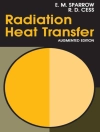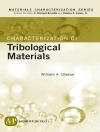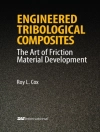Flexible electronics are electronics that can be stretched, bent, twisted, and deformed into arbitrary shapes. They break through the bottleneck and monopoly of traditional, rigid IC technologies and represent the next-generation electronics. This book provides an overview of the underlying theory and method of structural design for flexible electronics. Compared to intrinsically flexible and stretchable materials, structural engineering has proven its unique advantages, e.g. stretchable inorganic electronics. Based on the mechanical mechanisms, this book discusses the main structural deformation behaviors of flexible electronics, including mechanics of film-on-substrate and fiber-on-substrate, self-similar design with/without substrate, conformal design on rigid/soft substrate, purely in-plane design of serpentine interconnect with/without substrate, buckling-driven self-assembly and kirigami assembly strategies, neutral layer design, and the new materials-based structure design likeliquid metals, etc. Moreover, the related advanced fabrication technology, the devices designs and applications of flexible electronics are also presented. The comprehensive and in-depth content makes this book can be used as a reference book for experienced researchers, as well as a teaching material for graduate students.
Jadual kandungan
Chapter 1. Introduction of flexible electronics.- Chapter 2. Buckling of film-on-substrate.- Chapter 3. Buckling of fibers-on-substrate.- Chapter 4. Self-similar design without substrate.- Chapter 5. Self-similar design with substrate.- Chapter 6. Conformal design with rigid substrate.- Chapter 7. Conformal design with soft substrate.- Chapter 8. Deformation instability under compression.- Chapter 9. Deformation instability under stretching.- Chapter 10. Multiple neutral layer design for flexible electronics.- Chapter 11. Liquid metal for stretchable electronics.- Chapter 12. Devices and applications of flexible electronics.
Mengenai Pengarang
Yong An Huang received his Ph.D. degree in engineering mechanics from Northwestern Polytechnical University, Xi’an, China, in 2007. Currently, he is a Professor of Mechanical Engineering at Huazhong University of Science and Technology, the Vice Director of State Key Laboratory of Digital Manufacturing Equipment and Technology, and a winner of the National Science Fund for Distinguished Young Scholars. His research interests include the design and manufacturing for flexible electronics, curved electronics, printed display, and metamaterials. By now, he has published 3 monographs and more than 120 papers in international peer-reviewed journals like Science Advances, Advanced Materials, Advanced Functional Materials, Nature Communications, etc.
Yewang Su received his Ph.D. degree in engineering mechanics from Tsinghua University, Beijing, China, in 2011. Currently, he is a Professor in State Key Laboratory of Nonlinear Mechanics, Institute of Mechanics, Chinese Academy of Sciences, Beijing, China, a winner of the National Youth Top-notch Talent Support Program, and a winner of the Hundred Talent Program in Chinese Academy of Sciences. His research interests focus on the mechanics of flexible structures and devices. By now, he has published more than 80 papers in international peer-reviewed journals like Journal of the Mechanics and Physics of Solids, Nature Communications, PNAS, Advanced Materials, etc.
Shan Jiang received his Ph.D. degree in solid mechanics from the Huazhong University of Science and Technology (HUST), Wuhan, China, in 2018. He currently is a Postdoctoral Researcher at State Key Laboratory of Digital Manufacturing Equipment and Technology, HUST and a winner of the Young Scientists Fund of the National Natural Science Foundation of China. His research interests focus on the interdisciplinary research of flexible electronics and metamaterials. By now, he has published about 20 papers in international peer-reviewed journals like Advanced Materials, Advanced Functional Materials, ACS Applied Materials & Interfaces, Composite Structures, etc.












